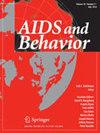An Adaptive Antiretroviral Therapy Adherence Intervention for Youth with HIV Through Text Message and Cell Phone Support with and without Incentives: A Sequential Multiple Assignment Randomized Trial (SMART)
Abstract
Youth living with HIV have low rates of medication adherence. Youth ages 15–24 years with adherence ≤ 80% or with HIV RNA PCRs (VL) ≥ 200 recruited through social media and clinical sites were randomized to brief weekday cell phone support (CPS) calls or daily, two-way, personalized text message (SMS) reminders for 3 months. Those with VL ≥ 200 or adherence ≤ 80% were rerandomized to receive SMS or CPS with monthly incentives for those utilizing the intervention at least 75% of days for 3 months. Those with VL < 200 or adherence > 80% after the initial 3 months were rerandomized to usual care or 3 months of tapered, 2x/week CPS or SMS. Self-reported adherence and VLs were collected every 3 months for one year. Eighty-three youth were recruited with 81% identifying as cisgender males, 55% Black, 22% Latine/x, and 76% gay, and 56% recruited from the Southern US. Both cohorts initially randomized to CPS and SMS demonstrated significant improvements in adherence over the 12-months (P <.001). Participants randomized to CPS had significant improvements in 7-day self-reported adherence over 12 months compared to those on SMS (P <.027). Those receiving a tapered intervention for an additional 3 months had improved self-reported adherence compared to those randomized to the standard of care arm (P <.001). Both SMS and CPS appear to be effective interventions for youth with poor antiretroviral adherence. Tapering the intervention for an additional 3 months is useful in maintaining adherence after the initial intervention. Additional research is required to determine how to best sequence these interventions, including the use of incentives.
Graphical Abstract


 求助内容:
求助内容: 应助结果提醒方式:
应助结果提醒方式:


